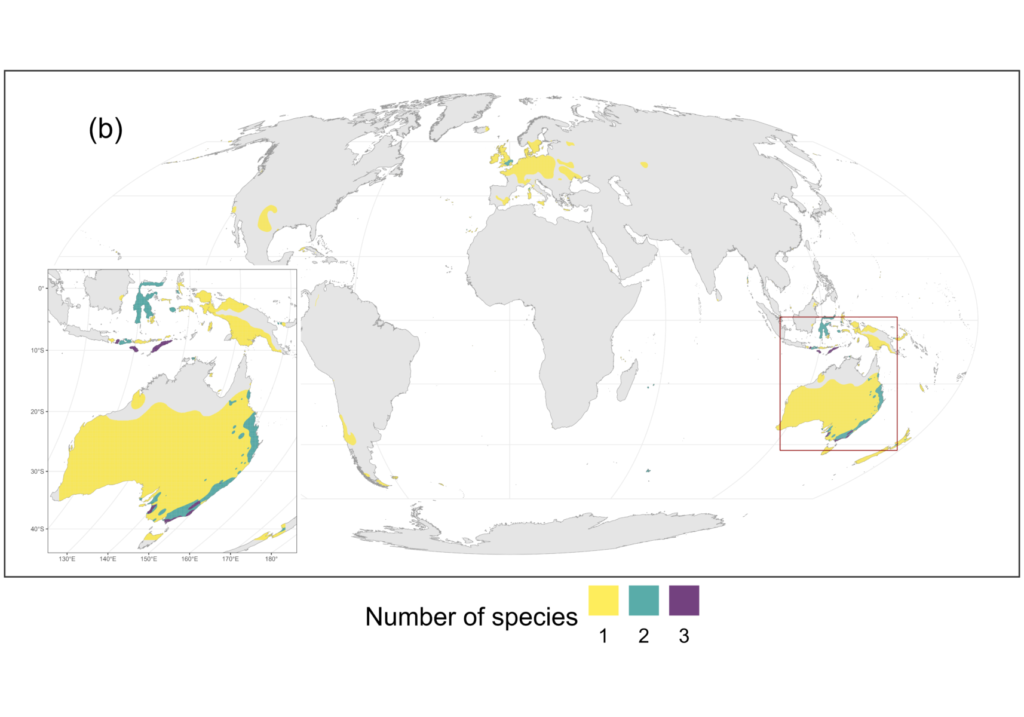In the new article “Threatened Mammals With Alien Populations: Distribution, Causes, and Conservation”, we explore the paradoxical topic of threatened mammals introduced in other regions.
Globalization is contributing to the introduction of many animal and plant species into new parts of the world. Invasive species can displace native species through competition or transmit new diseases. At the same time, however, some of these alien species are threatened with extinction in their native ranges. This creates a conservation paradox – because the question is, should alien populations of species that are threatened in their native range be protected or controlled? In this new study, we have now quantified this, in order to come one step closer to an answer to this paradox.
We found that including alien populations in the assessments of the threatened species reduces extinction risk of 22% of the species. Although some of these alien populations may have conservation value, conservation managers should carefully consider them on a case‐by‐case basis to avoid negative impacts on biodiversity.
This research was presented at the 7th Conference on Biological Invasions (NEOBIOTA; September 2024, Lisbon, Portugal), where the first and presenting author (Lisa Tedeschi) was awarded “Best talk“.
You can also read the press releases from the University of Vienna (in German) and Sapienza University of Rome (in Italian).


Distribution of (a) the native and (b) alien ranges of threatened mammals with alien populations (n = 36 species).
Reference:
Tedeschi L., Lenzner B., Schertler A., Biancolini D., Essl F., Rondinini C (2025) Threatened mammals with alien populations: distribution, causes, and conservation. Conservation Letters 18: e13069. DOI: 10.1111/conl.13069

